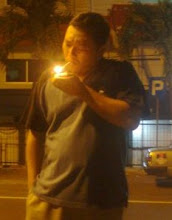Jawi Temple (Height 24,50 m,Lenght 14,20 and Width 9,5 m)were located in Pandaan ,district of Pasuruan , East Java province, Indonesia. In this area there is a relic of history (the past) in the form of temples, namely Candi Jawi. This temple is located precisely at the Village Candi Wates, Prigen county, Pasuruan, East Java. To reach that location (from the City Surabaya )people may use public transportation like bus,Surabaya-Malang, then we arrive at Km 45 (county Pandaan) and continued with another vehicle, with a distance of approximately 1 mile over the Park of Candra Wilwatikta. Unlike other temples generally have changed the name according to places, things, or taste that gives a name (eg: Prambanan, Burbrah, Bhima and others), Jawi Temple is one of the few temples whose name was virtually unchanged, although there also change the words. In this temple Negarakertagama called Java or Java-Jajawi.
Jawi Temple was built around the 13th century this is where laid majors the ashes of King's Kertanegara (last King Singosari) who died in 1292 AD Some other ashes stored in Singosari Temple. At the time of Majapahit, Jawi Temple visited by King Hayam Wuruk (Rajasanagara) at the time of the trip to East Java and Central Java in the third year of his reign (1275 C/1353 F). King Hayam Wuruk trip is accompanied by the entire royal family (Lord Sapta Prabhu ), the ministers, religious leaders and representatives of community groups. Nagarakertagama mention that the king Hayam Wuruk travel with his entourage aims primarily to live up to conditions that lead people, are usually carried out by the officials present. In addition to the inspections, and the pilgrimage, some are saying that the trip was Hayam Wuruk dharma is one that must be lived, which means magic, that is for the unification and unity (unity) kingdom.
Travel entourage king Hayam Wuruk stop in several places in his territory, such as Lasem (year 1354 AD), Lodaya (1357 AD), Palah (1361 AD), Lawang, Blitar, and Simping. In that way, Hayam Wuruk could also mobilize people to improve some of the crossings bridge in the Solo and Brantas River, Kali Konto, dam repair, improve, and at the same time went to Sumberjati Temple pilgrimage to the tomb of his grandfather (Raden Wijaya), rebuilt the Temple Jabung (1353 AD), beautify the temple worship in Panggih Tribhuwanattunggadewi, adding perwara temple in Palah (Panataran-Blitar, 1369 M) and an interest altar (1375 AD), completed two temples in Kediri (Surawana and Tigawangi Temple), and finally in 1371 established Padi Temple near Porong, East Java, which resembles enshrinement in Champa.
According to Nagarakrtagama, the temple will be full of cultural values on or in candrasengkala Archery Day of Fire (1253 C/1331 F) never damaged by lightning. In addition to the temple, there is one of the statues were damaged , Aksobaya Maha. This makes King Hayam Wuruk very sad, so one year later (1332 AD) he mobilized the people to fix it again. However, like other temples in Java, Candi Jawi starting note again in the early 20th century, after the building became a mess and so many elements are missing.
New Jawi Temple was restored back in 1938 because the condition was broken. The restoration of a supposedly qualified technocrats was carried out by archaeological Oudheidkundige Dienst with another rebuilding of the temple legs, peeling of the temple yard and laying out some of the temples in the form of the experiment. However, the restoration was discontinued in 1941 because some of the stone has been lost.
New restoration effort began again at Pelita II (1975/1976) conducted by the Directorate. Linbinjarah, Directorate General of Culture, MOEC with Drs. Tjokrosudjono (Head Sanctuary and Archeological Heritage East Java) as a field leader. In this third restoration, thanks to the flair of a worker named Mbah Karto Plewek of Prambanan, the stones are missing can be found again so restoration can be proceed to completion in 1980. Two years later (1982), Jawi Temple was inaugurated by the government and used as building and cultural conservation and historical attractions.
Jawi Temple was built on the shelf or high base and surrounded by a courtyard and pool. Outside the pool there are still remnants of the pages linked to the gate. But the form of pages, gates and other buildings including the fence is not clear anymore because collapsed, lost or overwritten other buildings on it.
Jawi Temple stood on a rectangular field that the material is made of black stone and white stone, measuring 14.24 x9 wide, 55 meters to 24.50 meters high. As temples others, this temple consists of three parts: legs, body and roof. At the foot of the temple are carved reliefs with unknown meaning of certain reliefs depicting the female figure and the accompanist (clown-servants), building houses and temples, and with a wide panorama of trees. In front of the ascent there are relics of the temple curtain is rectangular, which were located across the front door facing the east slightly oblique to the north, facing Mount Penanggungan. The position of this door is used by some experts as a reason to confirm that the Jawi Temple is not a place of worship or pradaksina, because the temples for houses of worship are facing the mountain, where the gods rested.








No comments:
Post a Comment